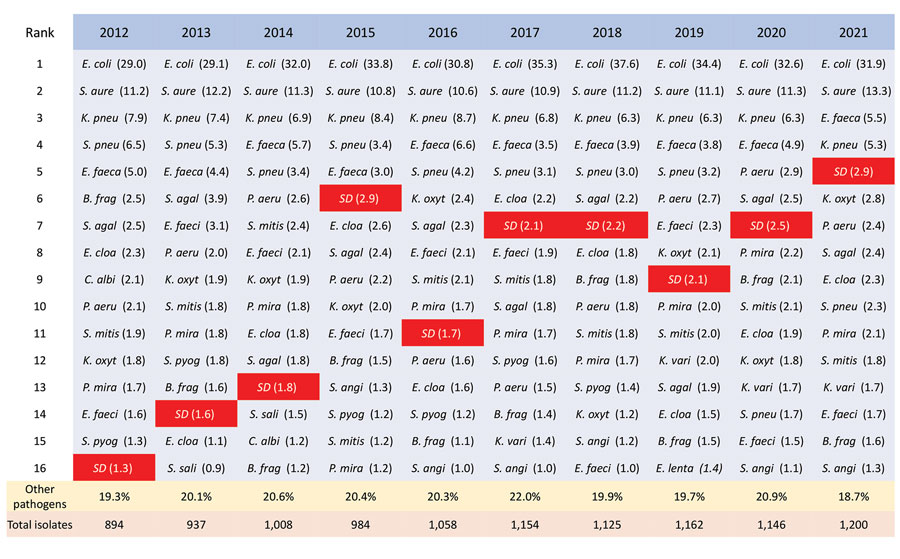Volume 29, Number 2—February 2023
Synopsis
Streptococcus dysgalactiae Bloodstream Infections, Norway, 1999–2021
Figure 2

Figure 2. Leading causes of bloodstream infections, western Norway, 2012–2021. We investigated bloodstream infections in Health Region Bergen, Bergen, Norway, and ranked the most common pathogens detected in each year by frequency. Red shading indicates Streptococcus dysgalactiae (abbreviated as SD). Numbers in parentheses represent the percentage of all identified cases of bloodstream infections for each pathogen. Percentages of other pathogens detected and the total number of bloodstream infections per year are shown across the bottom. B. frag, Bacteroides fragilis; C. albi, Candida albicans; E. cloa, Enterobacter cloacae; E.coli, Escherichia coli; E. faeca, Enterococcus faecalis; E. faeci, Enterococcus faecium; E. lenta, Eggerthella lenta; K. oxyt, Klebsiella oxytoca; K. pneu, Klebsiella pneumoniae; K. vari, Klebsiella variicola; P. aeru, Pseudomonas aeruginosa; P. mira, Proteus mirabilis; S. agal, Streptococcus agalactiae; S. angi, Streptococcus anginosus; S. aure, Staphylococcus aureus; S. mitis, Streptococcus mitis; S. pneu, Streptococcus pneumoniae; S. pyog, Streptococcus pyogenes; S. sali, Streptococcus salivarius.